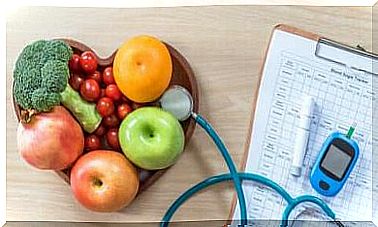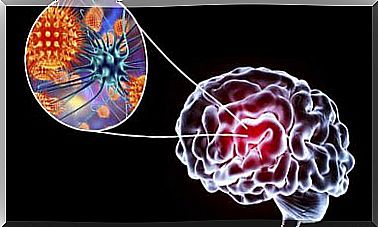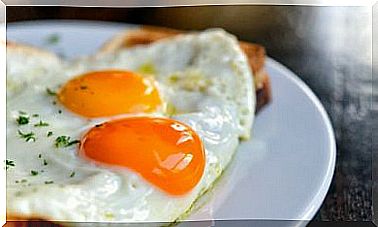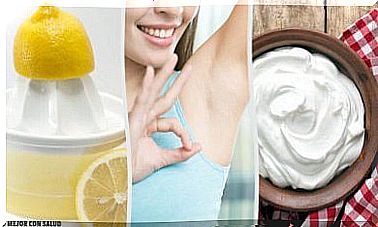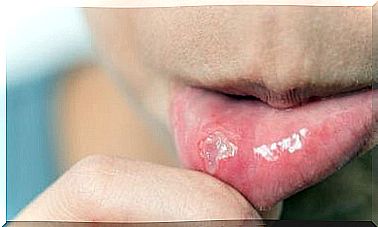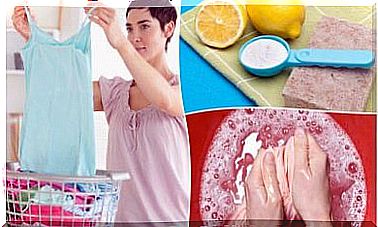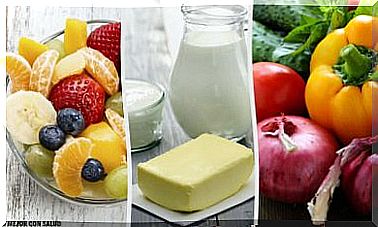Nephrolites: Worth Knowing About Kidney Stones
Kidney stones can also be inheritable. To prevent this from occurring, it is advisable to drink plenty (between 6 and 8 glasses a day) and avoid alcohol and caffeine.
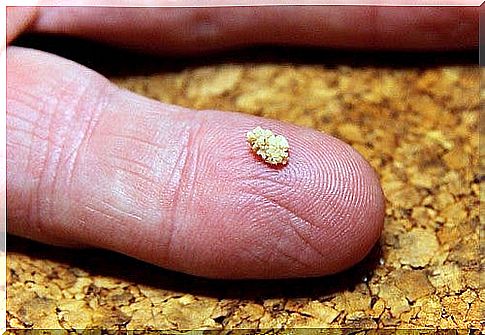
Nephrolites, or kidney stones, are hard deposits that form from the crystals present in the urine. Often natural and chemical substances in the urine prevent kidney stones from developing.
However, when stone formation does occur, it is good to understand the symptoms, causes, and effects. It is also helpful to know about possible remedies. If kidney stones are not treated in time, irreversible damage can result.
There are different types of nephrolites. Therefore an analysis must be carried out in order to treat this correctly. With a healthy lifestyle, you can prevent new stones from appearing.
Causes of nephrolites

About 5% of women and 10% of men in the United States will have kidney stones at some point in their life. This painful disease results in an annual loss of $2 million.
If certain substances are found in the urine, these can form kidney stones. However, this process can take weeks or months. The risk is even higher for people who do not drink enough fluids. Even if the daily amount of urine is less than 1 liter, the risk of developing kidney stones is greater.
Kidney stones can be eliminated without leaving any damage. However, they are often very painful and can re-form if not treated appropriately. At the same time, kidney damage or other complications can occur if a long time elapses between stone formation and treatment.
Dr. Glenn Preminger, director of the Division of Urologic Surgery at Duke University affirmed the following: “There is no doubt that kidney stones are related to obesity.” Dr. Preminger has also co-authored various studies in the Journal of Urology.
Symptoms
With kidney stones, you usually won’t feel any symptoms until they enter the ureters, which carry urine to the bladder. The ureters can become blocked with kidney stones, preventing urine from entering the kidneys.
There are several symptoms that you can experience. The most common are intestinal problems that occur now and then and also suddenly. They disappear in the same way. There is either pain on one side of the back or in the abdominal area. The latter can spread to the testicles or the groin area.
Other possible symptoms:
- Nausea
- Blood in the urine
- nausea
- unusual color of urine
- fever
Effects
If kidney stones are not treated, complications can arise. Because the nephrolites prevent the correct flow of urine. These include kidney damage and recurring infections.
Possible complications:
- Urinary tract infection
- Unilateral, acute obstructive uropathy
- Kidney damage with scars
- Recurrence of kidney stones
- Loss or decrease in kidney function
Different types of kidney stones
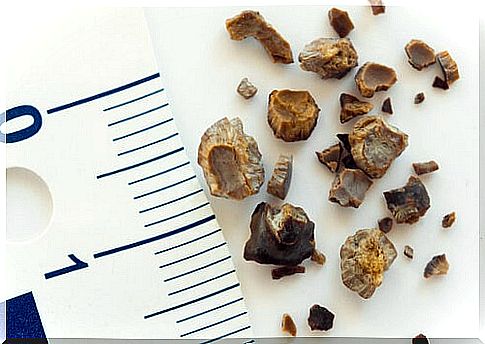
There are different types of kidney stones, which in turn require different methods of treatment:
- Cystine stones: These can form in both men and women with inherited cystinuria. This type of kidney stone is very rare.
- Calcium stones: This type is the most common. Men between the ages of 20 and 30 are most commonly affected. They arise when calcium combines with other substances such as phosphates, carbonate or oxalate (the most common substance). Oxalate is found in various foods, such as spinach or nutritional supplements with vitamin C. Diseases of the small intestine can also promote the appearance of calcium stones.
- Uric acid stones: These are more common in men than women. They can occur with chemotherapy or gout.
- Struvite stones (magnesium ammonium phosphate): These types of stones occur in women with urinary tract infections. They can get so large that the connection between the bladder, kidney, and ureters becomes blocked.
- Other substances can also form stones, such as the drugs indinavir, aciclovir and triamterene.
treatment
Treatment for kidney stones can start with a special diet. After the doctor makes a diagnosis, a special diet can be started to shrink and remove the stones. A dietitian can provide information about the recommended diet. It is highly likely that the amount of the following nutrients will be changed:
- potassium
- salt
- liquid
- Proteins
- Oxalate
- calcium
One way to avoid or eliminate kidney stones is to drink 6-8 glasses of water a day. This causes the body to produce a lot of urine. However, this can cause a lot of pain and you may need pain medication. However, if the pain becomes unbearable, hospitalization may be necessary for intravenous fluids .
Further treatment will depend on the type of stones and symptoms. Small stones are often eliminated on their own. In this case, it is recommended to have the urine sample with the stones examined by a doctor in order to avoid future discomfort.
Medicines used to treat nephrolites
There are different medications available depending on the type of kidney stones. The doctor prescribes them to prevent new stones from forming and to excrete old ones. Some of them are:
- Diuretics
- thiazide diuretic or drainage pills
- Antibiotics that help with struvite stones
- Sodium citrate and baking soda
- Allopurinol, used to treat uric acid stones
- Phosphate solutions
Surgical approach to treating nephrolites
The following circumstances should exist for a surgical procedure:
- The diameter of the stone must be greater than 8 mm.
- The stone must be an obstacle to the flow of urine while causing kidney damage or infection.
- The stone has to keep growing.
- The pain must be continuous and unbearable.
There is the option of non-invasive surgery. This also does not cause any serious complications:
- Percutaneous nephrostomy: This method is used when the kidney stones are very large, near the kidney or in the kidney itself. The stone is removed through an endoscope. This is inserted into the kidney through a small incision.
- Ureteroscope: It can be used when the stones are in the lower urinary tract.
- Extracorporeal Li thotripsie: Here shock waves are used to remove small stones. These must be in the ureter or near the kidney for the method to work. The stones are destroyed with shock waves or sound waves and excreted through the urine.
- Open surgery or nephrolithotomy is sometimes necessary. However, this method is only used if none of the previous can be applied or works.
, Recommendations to Nephrolithen to prevent
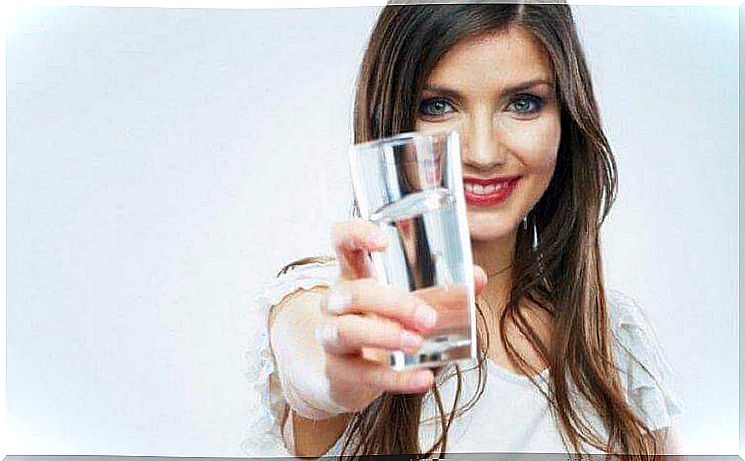
If you follow these simple but powerful pieces of advice, you can prevent kidney stones. If you already have it, you should take steps to prevent future complications or new growth.
- Kidney stones can be predisposed. If they happen more often, it is advisable to drink more fluids. As already mentioned, you should drink between 6 and 8 glasses a day so that the organism produces enough urine. Some even recommend up to 12 glasses of water.
- With regard to the recommended fluids, also note that some drinks dehydrate the body. Therefore, you should avoid drinks with caffeine and alcohol, for example.
- It is important to know what type of stone it is in order to take the appropriate medication. Some medicines can reduce substances in the urine that make stones.
- Change your diet and avoid foods that promote kidney stones. This is especially true if you suffer from stones frequently. These foods include cheese and milk, for example.
- When it comes to oxalate stones, avoid fizzy drinks, peanuts, and chocolate.
- If you have cystine stones, you should avoid fish.
- People who suffer from uric acid stones should avoid meat, anchovies and chicken.
Always note that you should not downplay kidney stones. They can get bigger over time and cause consequential damage. Therefore, you should have regular preventive examinations from your doctor and also take good care of your kidneys.
